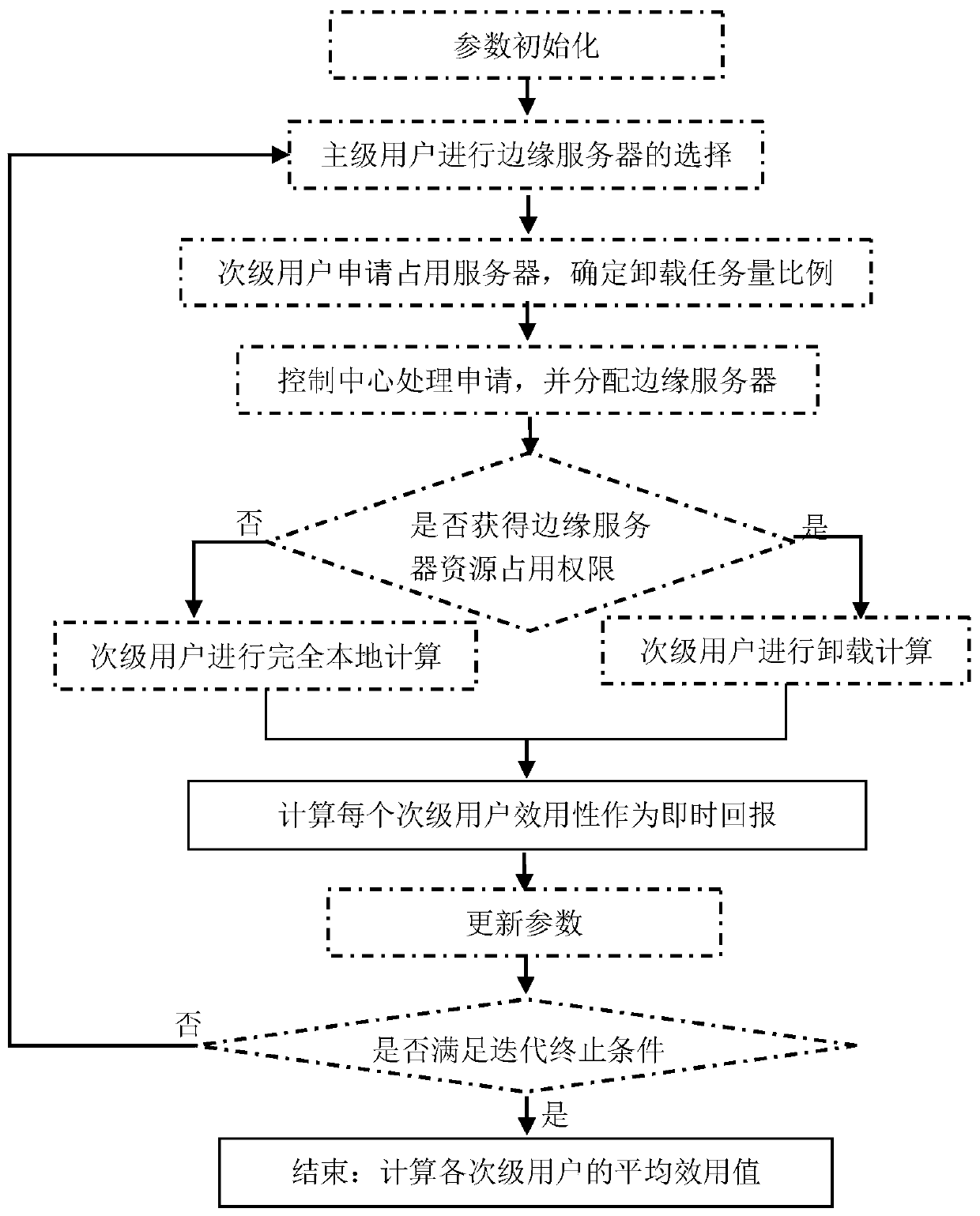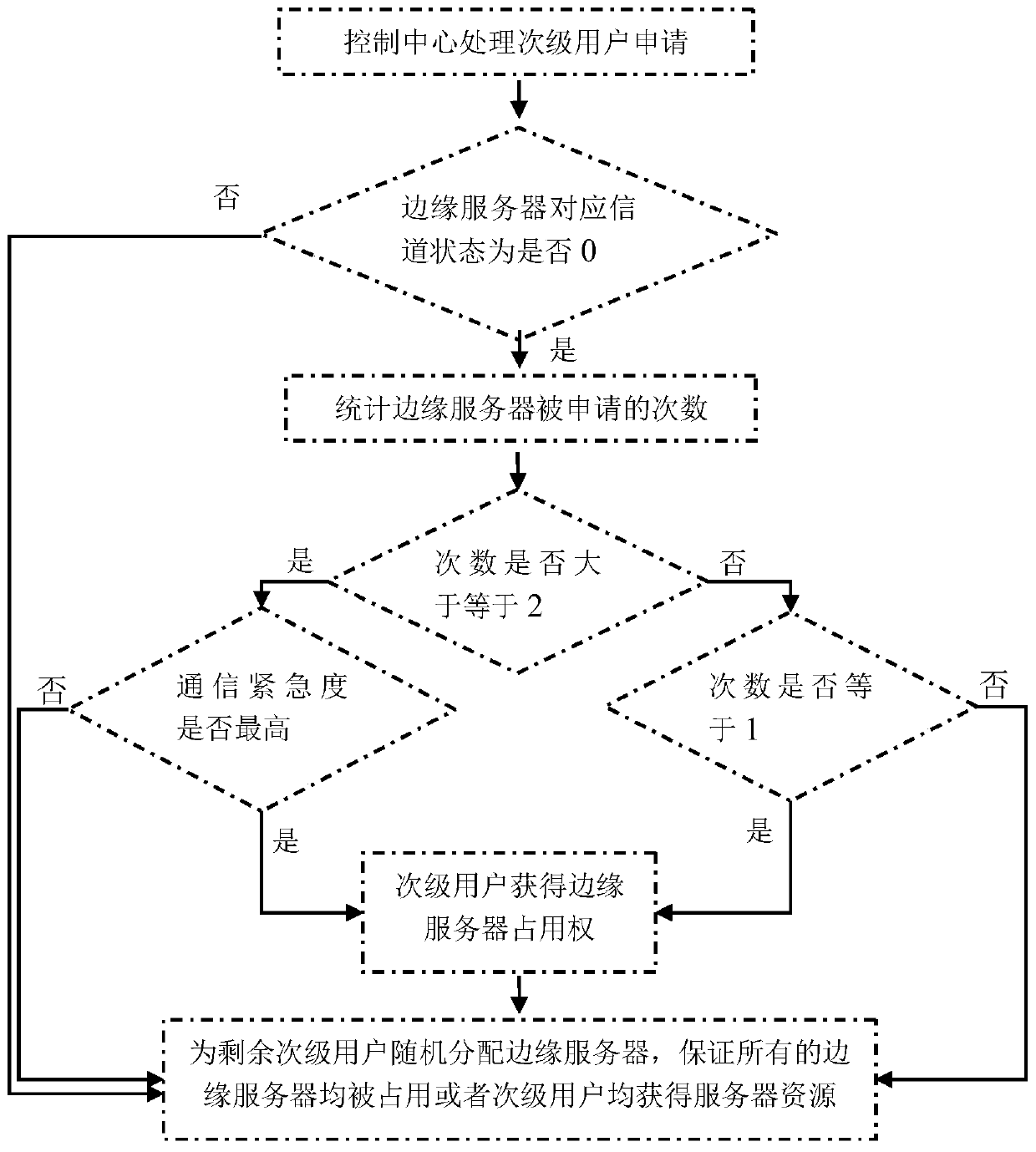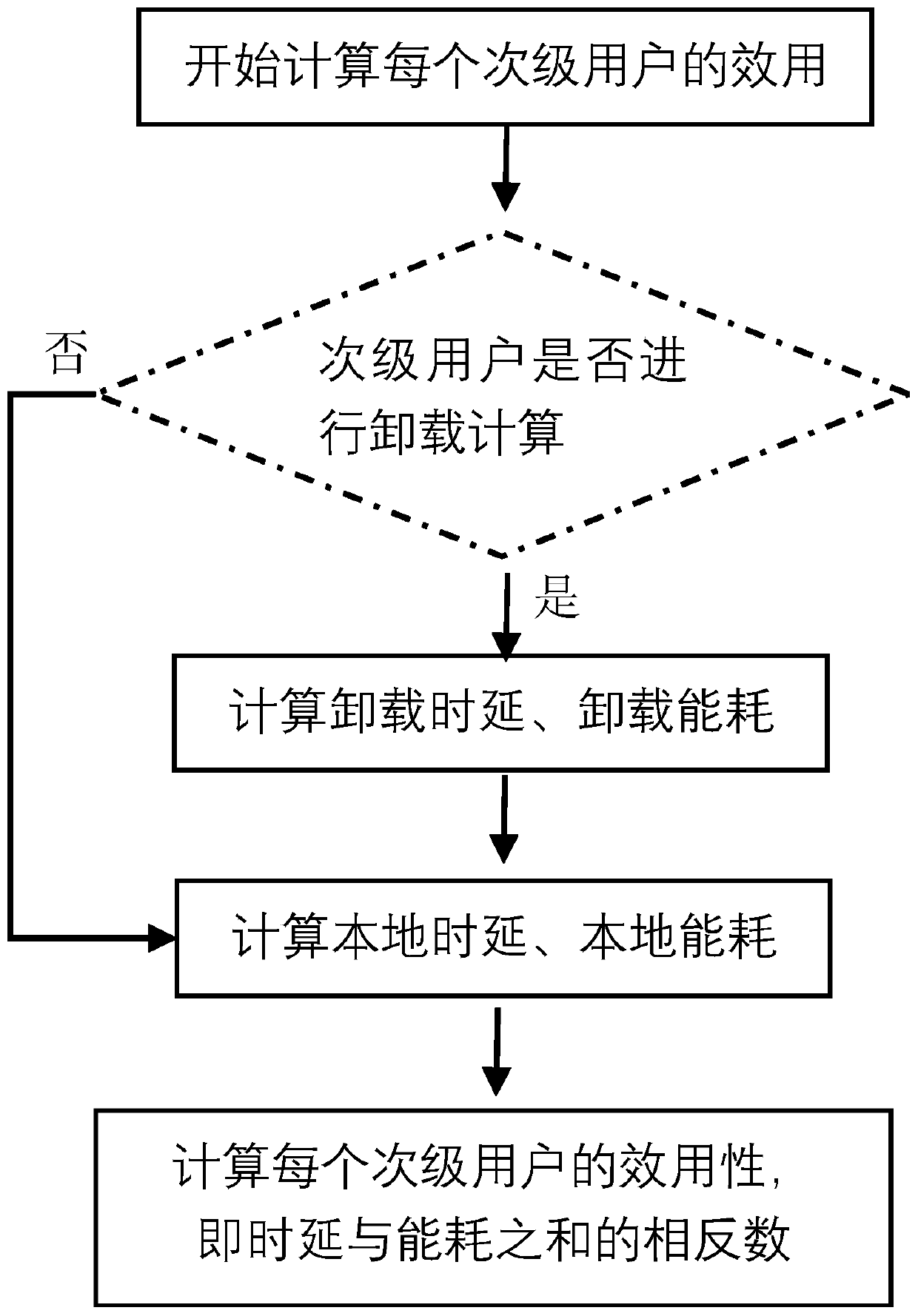Multi-level user mobile edge computing method based on reinforcement learning
A secondary user and edge computing technology, applied in the field of wireless communication, can solve problems such as user delay energy consumption requirements, system utility, optimal strategy convergence speed, etc., to improve system resource utilization and meet delay and energy consumption requirements, and the effect of improving utility
- Summary
- Abstract
- Description
- Claims
- Application Information
AI Technical Summary
Problems solved by technology
Method used
Image
Examples
Embodiment 1
[0042] This embodiment designs a mobile edge computing method for multi-level users based on reinforcement learning. The processing flow of the exchange method in the present invention includes:
[0043] S1, system initialization parameters, determine the number of primary users N P , The number of secondary users N S , The number of edge servers and the number of control nodes N M , The transmission power P of the secondary user, the task amount of the secondary user is Task, the channel capacity C of the channel between each secondary user and the edge server, the communication urgency Em is zero; the initialization method parameters, the edge server corresponds to Channel status The initial value is unoccupied, the value is zero, the initial Q value is zero, the learning rate is α, the discount factor is δ, the priority function value is zero, the priority threshold is θ, and the priority queue is empty, start iteration;
[0044] S2, the primary user chooses to occupy the edge ...
Embodiment 2
[0054] This embodiment is attached with the description figure 1 Go to FIG. 5 and use a specific mobile edge computing embodiment with two secondary users to illustrate the mobile edge computing method based on reinforcement learning proposed in the present invention in detail.
[0055] Consider the system model as follows: In the process of mobile edge computing, 1 primary user and 2 secondary users choose to use 3 edge servers to perform offloading tasks. The task amount of secondary user 1 is Task 1 , The task amount of secondary user 2 is Task 2 , The channel capacity between the two secondary users and the three edge servers is matrix C, and the communication urgency is zero. The channel status corresponding to the edge server is all zero, that is, it is not occupied. The Q value is zero, the learning rate is 0.8, the discount factor is 0.02, the priority function value is zero, the priority threshold is 0.15, and the priority queue is empty, and the iteration starts.
[0056...
PUM
 Login to View More
Login to View More Abstract
Description
Claims
Application Information
 Login to View More
Login to View More - R&D
- Intellectual Property
- Life Sciences
- Materials
- Tech Scout
- Unparalleled Data Quality
- Higher Quality Content
- 60% Fewer Hallucinations
Browse by: Latest US Patents, China's latest patents, Technical Efficacy Thesaurus, Application Domain, Technology Topic, Popular Technical Reports.
© 2025 PatSnap. All rights reserved.Legal|Privacy policy|Modern Slavery Act Transparency Statement|Sitemap|About US| Contact US: help@patsnap.com



